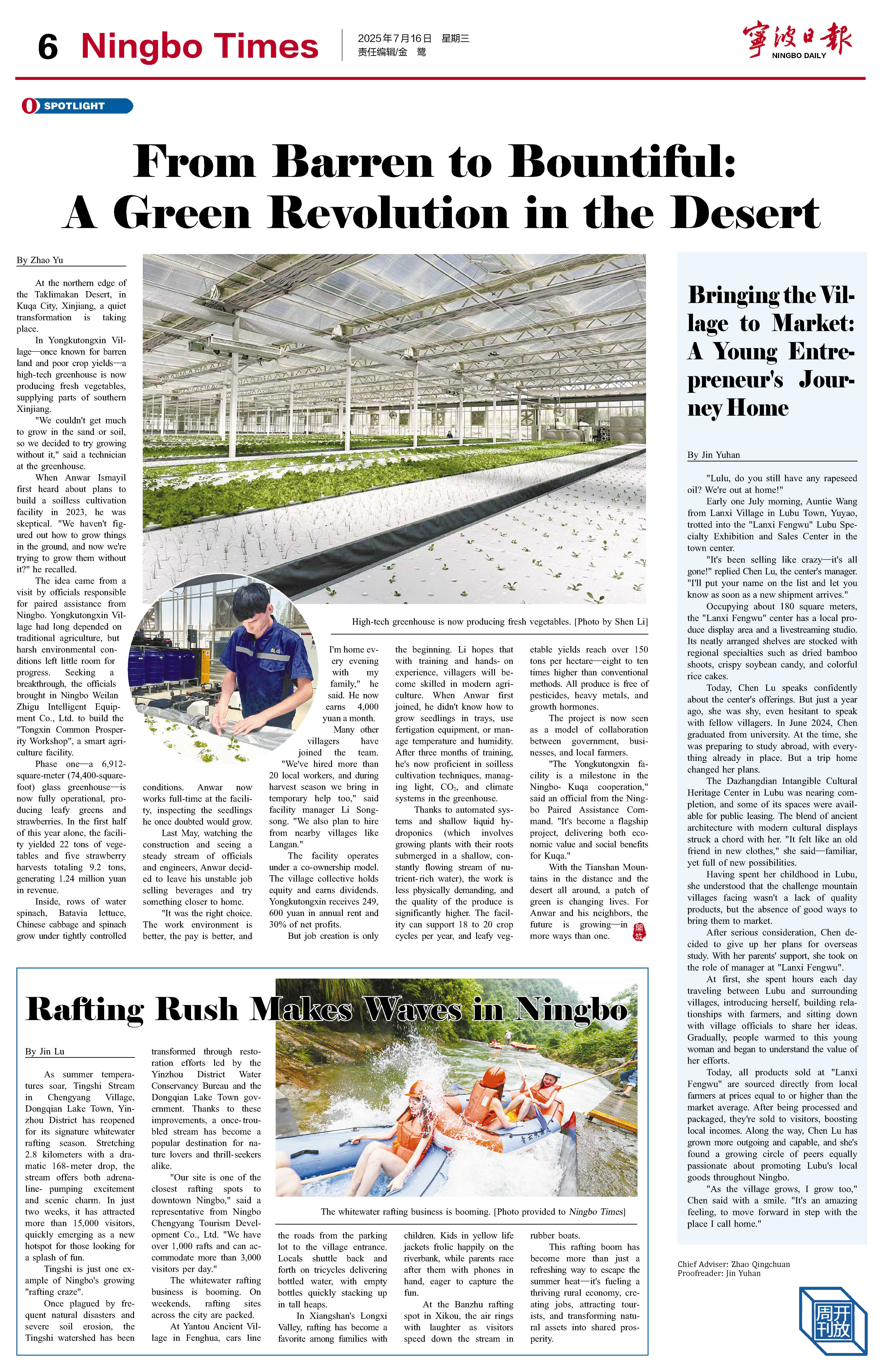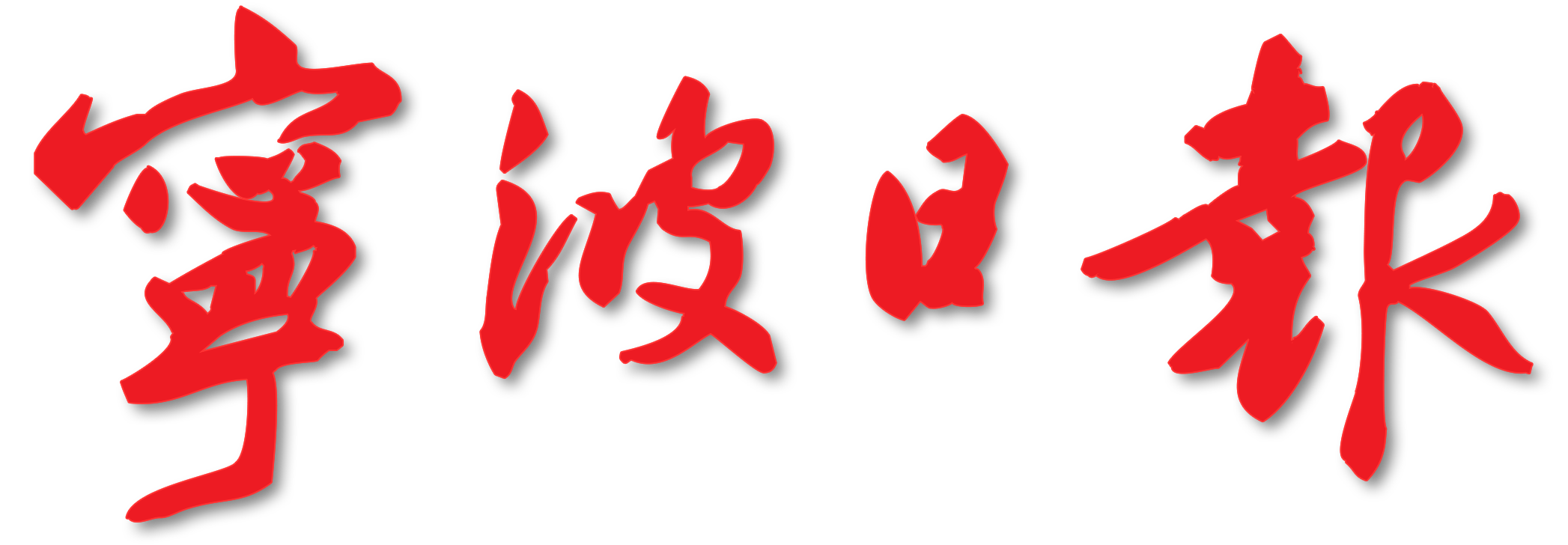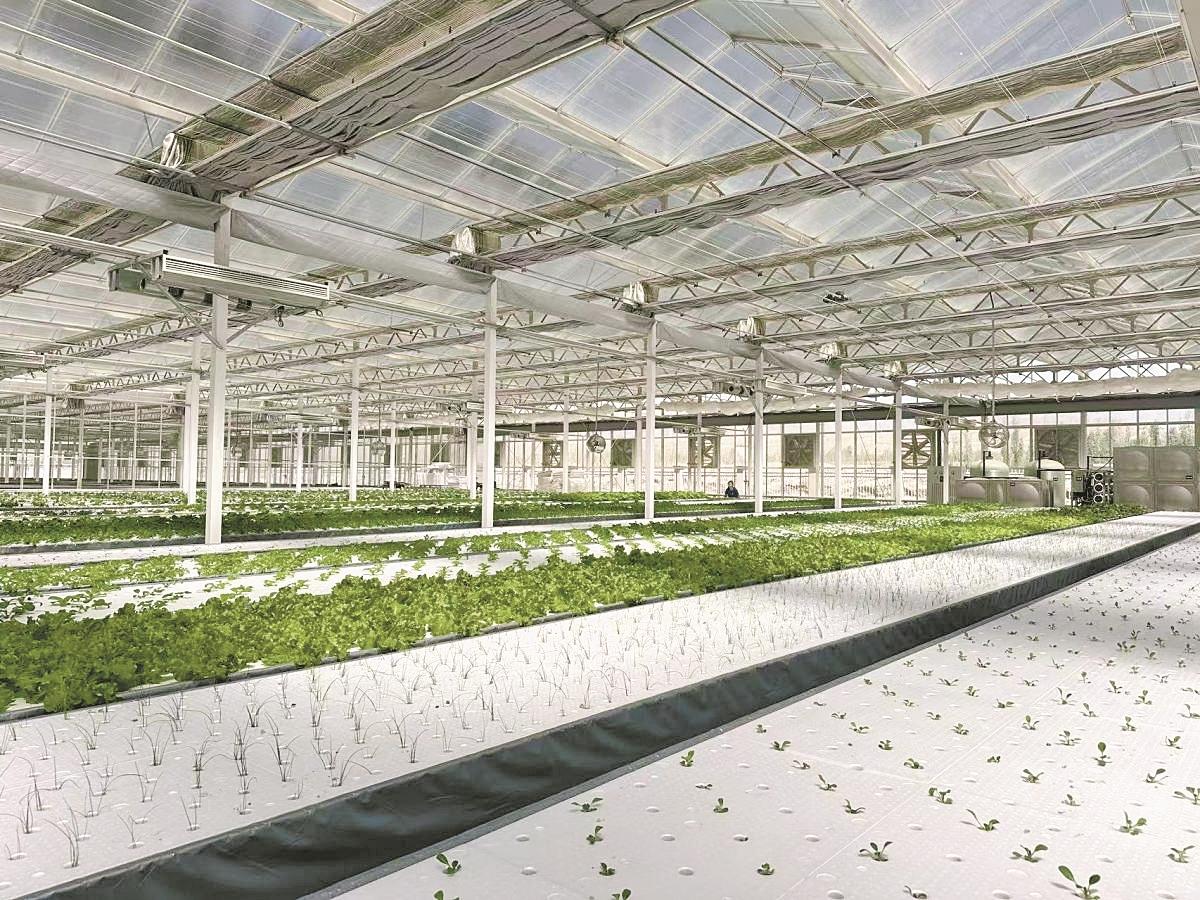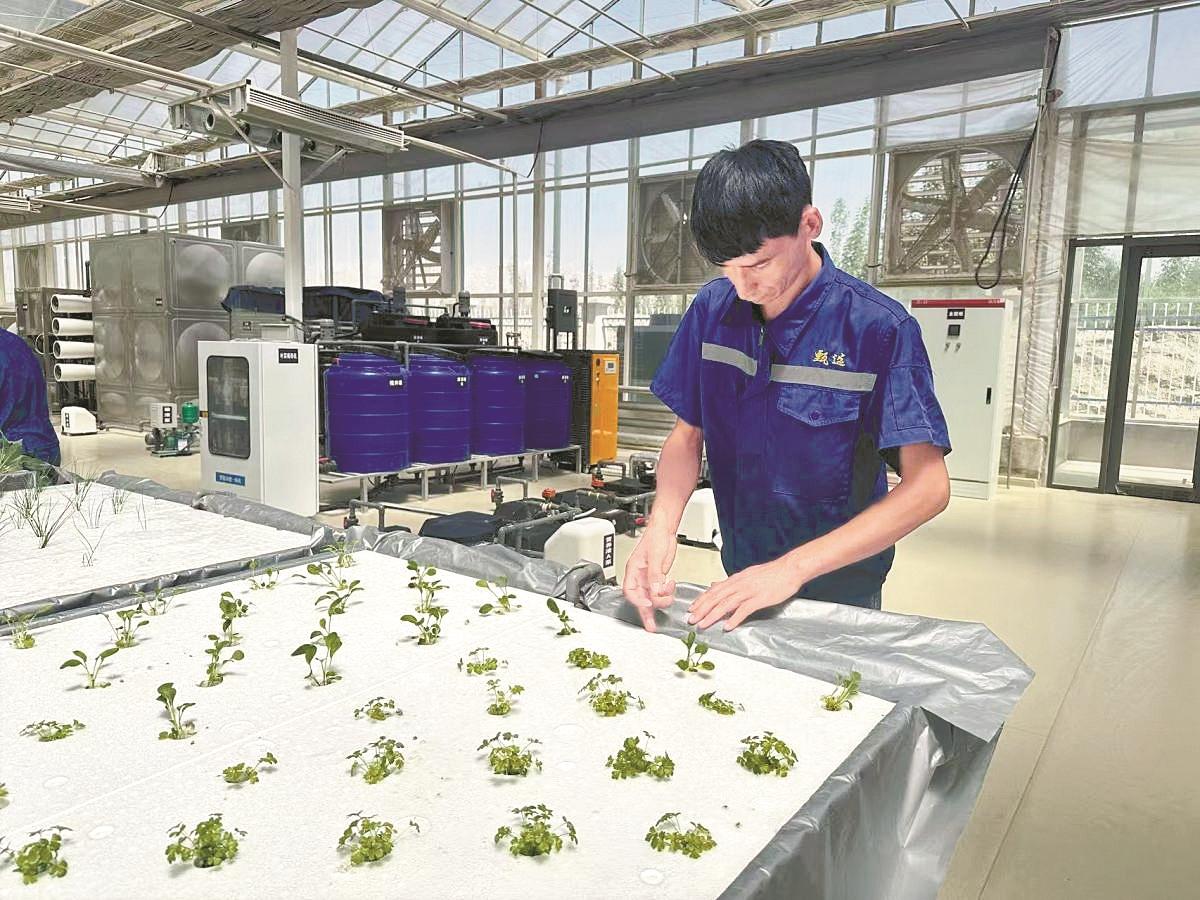By Zhao Yu
At the northern edge of the Taklimakan Desert, in Kuqa City, Xinjiang, a quiet transformation is taking place.
In Yongkutongxin Village—once known for barren land and poor crop yields—a high-tech greenhouse is now producing fresh vegetables, supplying parts of southern Xinjiang.
"We couldn't get much to grow in the sand or soil, so we decided to try growing without it," said a technician at the greenhouse.
When Anwar Ismayil first heard about plans to build a soilless cultivation facility in 2023, he was skeptical. "We haven't figured out how to grow things in the ground, and now we're trying to grow them without it?" he recalled.
The idea came from a visit by officials responsible for paired assistance from Ningbo. Yongkutongxin Village had long depended on traditional agriculture, but harsh environmental conditions left little room for progress. Seeking a breakthrough, the officials brought in Ningbo Weilan Zhigu Intelligent Equipment Co., Ltd. to build the "Tongxin Common Prosperity Workshop", a smart agriculture facility.
Phase one—a 6,912-square-meter (74,400-square-foot) glass greenhouse—is now fully operational, producing leafy greens and strawberries. In the first half of this year alone, the facility yielded 22 tons of vegetables and five strawberry harvests totaling 9.2 tons, generating 1.24 million yuan in revenue.
Inside, rows of water spinach, Batavia lettuce, Chinese cabbage and spinach grow under tightly controlled conditions. Anwar now works full-time at the facility, inspecting the seedlings he once doubted would grow.
Last May, watching the construction and seeing a steady stream of officials and engineers, Anwar decided to leave his unstable job selling beverages and try something closer to home.
"It was the right choice. The work environment is better, the pay is better, and I'm home every evening with my family," he said. He now earns 4,000 yuan a month.
Many other villagers have joined the team. "We've hired more than 20 local workers, and during harvest season we bring in temporary help too," said facility manager Li Songsong. "We also plan to hire from nearby villages like Langan."
The facility operates under a co-ownership model. The village collective holds equity and earns dividends. Yongkutongxin receives 249,600 yuan in annual rent and 30% of net profits.
But job creation is only the beginning. Li hopes that with training and hands-on experience, villagers will become skilled in modern agriculture. When Anwar first joined, he didn't know how to grow seedlings in trays, use fertigation equipment, or manage temperature and humidity. After three months of training, he's now proficient in soilless cultivation techniques, managing light, CO2, and climate systems in the greenhouse.
Thanks to automated systems and shallow liquid hydroponics (which involves growing plants with their roots submerged in a shallow, constantly flowing stream of nutrient-rich water), the work is less physically demanding, and the quality of the produce is significantly higher. The facility can support 18 to 20 crop cycles per year, and leafy vegetable yields reach over 150 tons per hectare—eight to ten times higher than conventional methods. All produce is free of pesticides, heavy metals, and growth hormones.
The project is now seen as a model of collaboration between government, businesses, and local farmers.
"The Yongkutongxin facility is a milestone in the Ningbo-Kuqa cooperation," said an official from the Ningbo Paired Assistance Command. "It's become a flagship project, delivering both economic value and social benefits for Kuqa."
With the Tianshan Mountains in the distance and the desert all around, a patch of green is changing lives. For Anwar and his neighbors, the future is growing—in more ways than one.




